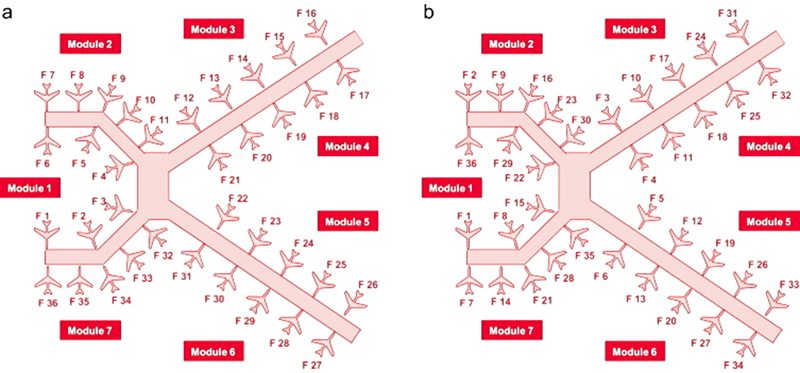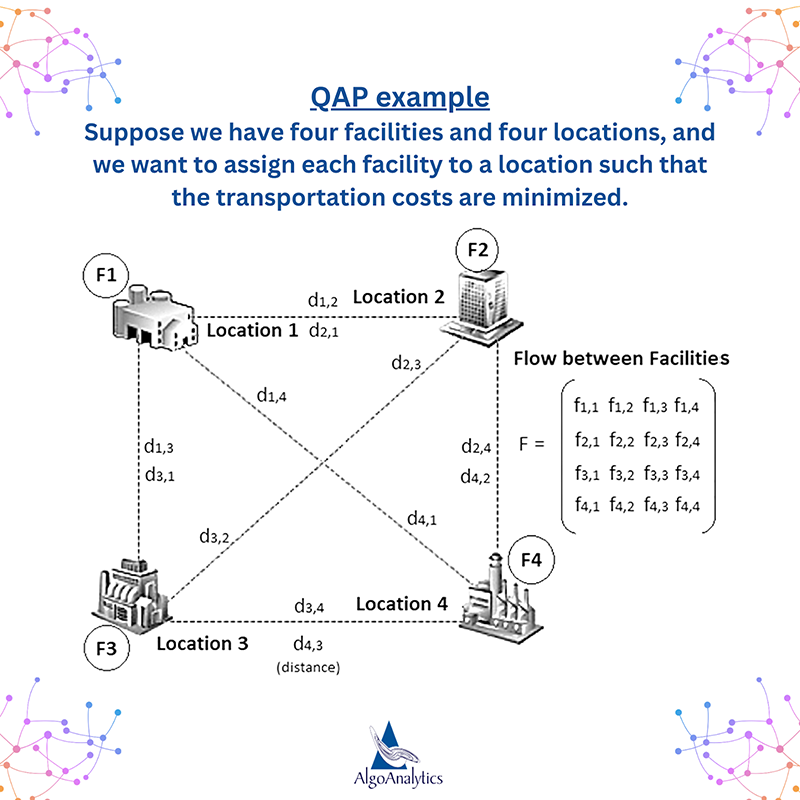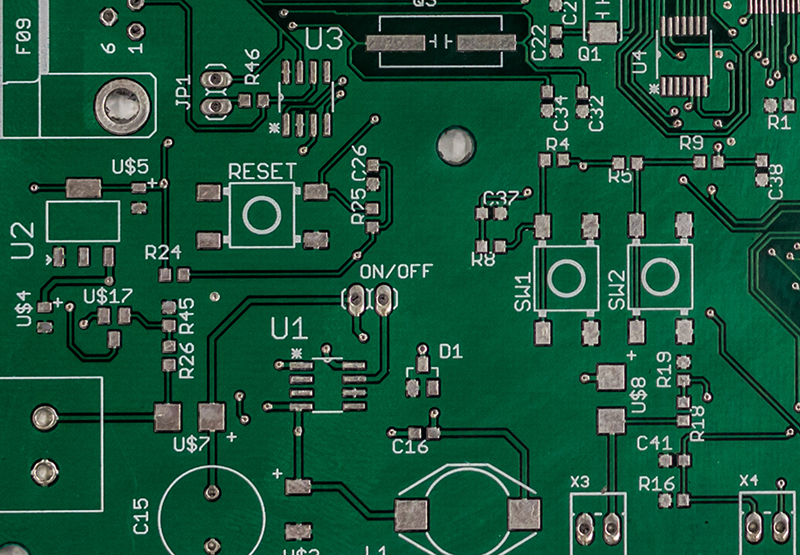
Business Applications of the Quadratic Assignment Problem (QAP)
October 26, 2023
Have you ever been frustrated with your food delivery apps for not assigning a delivery partner quickly or your assigned airport gate being changed at the last minute? These presumably simple tasks of assigning partners to orders or gates to flights in the most efficient way is actually done with the help of a mathematical problem― The Quadratic Assignment Problem (QAP).
The Quadratic Assignment Problem (QAP) involves assigning a set of objects to a set of locations in a way that minimizes the total cost of the assignment. The cost of assigning an object to a location depends on the distance between the objects and the locations. The goal is to find the assignment that minimizes the total cost of all the assignments.
For example, for a food delivery app, if we have a set of orders and a set of delivery partners, and we want to assign each partner to an order such that the transportation costs are minimized, then we can use the QAP to find the best assignment.
The QAP is a challenging problem because the number of possible assignments grows very quickly as the number of objects and locations increases. As the size of the problem increases, the time and computational resources required to solve the problem using classical methods may become impractical. In such cases, quantum computing algorithms could potentially offer an advantage in solving the QAP efficiently.
With increased efficiency, the QAP can have a number of business applications:
- 1.
Facility Layout Applications—Airport Gate Assignments can be optimized by identifying the most efficient manner in which the airport passengers can be assigned gate number for smooth operability by focusing on minimizing total passenger as well as baggage movements activities.

Gate assignments being optimized at an airport using the QAP
Source: https://www.sciencedirect.com/science/article/abs/pii/S0305048314000760
- 2.
Manufacturing Based Applications—Optimization of the manufacturing truck fleet to deliver products and return in the quickest and most efficient manner possible can be done if the manufacturer determines the most efficient route from their facilities to their clients. Even in packaging and cutting, an optimal way to arrange a set of rectangular pieces in a container such that the waste material is minimized can be obtained.

Source: https://www.researchgate.net/figure/Quadratic-Assignment-Problem-QAP_fig1_329517448
- 3.
Electronics Based Applications—The QAP can be used for Wiring problems as well as placing components on a circuit board. An ideal placement of computer components in order to minimize the total amount of wiring required to connect them or an ideal placement of the components in the circuit board to improve signal quality and performance of the device can be achieved.

Circuit board wiring can be optimized using the QAP
- 4.Computer Vision Applications—The QAP can be used to segment an image into different regions, based on their similarity or dissimilarity. This can be achieved by defining a cost matrix that represents the cost of assigning each pixel to a particular region. The optimal assignment can then be found using the QAP. It can be used to match features in two or more images, such as points, lines or shapes, in order to find correspondences between the images. This can be useful for tasks such as stereo vision, where the QAP can be used to find the correspondence between pixels in two images taken from different viewpoints.
Other applications of the QAP include hospital resource allocation, inventory management, drug design and molecular alignment.
Our team at AlgoAnalytics is exploring the potential of quantum computing algorithms for solving the QAP. As quantum computing technology advances, it is possible that new algorithms will be developed that could offer significant speedup over classical algorithms for solving the QAP. Another area of research is exploring the use of machine learning and artificial intelligence techniques to solve the QAP. These methods have shown promising results in other optimization problems and could potentially be applied to the QAP as well. In particular, deep learning methods could be used to learn heuristics for solving the QAP efficiently.
Overall, the QAP is a fascinating optimization problem that will continue to be an important benchmark for evaluating the performance of optimization algorithms and for developing new methods for solving complex optimization problems in the future.
References:
- Note:Product names, company names and organization names in this text are trademarks or registered trademarks of each company.





